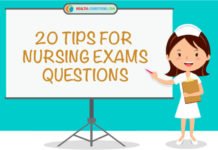MAOIs (Monoamine oxidase inhibitors)
GENERAL DESCRIPTION
MAOIs were the first class of drugs that have antidepressant effects. They may be classified as hydrazide chemically. Now these drugs have been little use because of their toxicity and lethal drug-food and drug-drug interaction.
Isocarboxazid, phenelzine, tranylcypromine which are all irreversible inhibitors of both MAO A and MAO B (non-selective) which in turn makes them effective for treatment of depression.
Another example of MAOI which is a big different from the rest is Selegiline and meclobemide which are selective inhibitors of MAO B and A respectfully. Therefore shown to be effective in reducing the symptoms of Parkinson’s disease which results from depletion of dopamine.
MAOI may be good choice as first or second line treatment of depression but practically it is last choice because it not only have high drug-drug interaction but also have drug-food interaction. MAO enzyme present in gut there they play an important role in breakdown of monoamine ingested and food. Inhibition of MAO enzyme can’t metabolize tyramine which is contained in foods that have been aged or fermented. Built up tyramine is taken up into synaptic nerve terminals and act as a catecholamine releasing agent and large amount of catecholamines caused by tyramine cause hypertensive crisis and potentially a stroke. So with MAOI tyramine containing food must be avoided.
| Class | Generic Name | Brand Name |
|
MAOIs (Monoamine Oxidase inhibitors) |
Isocarboxazid | Marplan |
| Phenelzine | Nardil | |
| Tranylcypromine | Parnate | |
| Selegiline | Emsam | |
| Moclobemide | Amira, Clobemix, Depnil |
MECHANISM OF ACTION
MAOIs work by elevating certain neurotransmitter in the brain. At presynaptic serotonergic neuron, this interact with postsynaptic neuron which have postsynaptic receptors which are 5-HT. serotonin is synthesized from amino acid tryptophan by serotonergic neurons. These serotonin is stored in vesicles for regulated release.
At presynaptic noradrenergic neuron, this interact with postsynaptic neuron which have postsynaptic receptors which are β and α1. Norepinephrine is synthesized from amino acid tyrosine by noradrenergic neurons and stored in vesicles awaiting regulated release.
When serotonin and NE release from the neuron they stimulate their receptors and at the same time they transported back to their neurons by a process called reuptake. Serotonin is reuptake by serotonin transporter or SERT and norepinephrine is transported back to their neuron by norepinephrine transporter or NET. Once both chemicals reabsorb they partially repacked in synaptic vesicles in partially broken down into inactive metabolites by an enzyme monoamine oxidase or MAO.
Monoamine oxidase is mitochondrial enzyme that degrades monoamine such as serotonin and epinephrine. MAO enzyme are of two types MAO A and MAO B. They are distributed in brain, gut and liver. MAO A preferably metabolize serotonin but also metabolize norepinephrine and dopamine while MAO B preferably metabolizes dopamine. Therefor inhibition of MAO A may cause antidepressant effects. So mechanism of action of MAOIs is, inhibiting the MAO enzyme preventing breakdown of monoamine neurotransmitter ultimately increasing the availability of these chemicals.
PHARMACOKINETICS
MAOIs are orally active. It is readily absorbed from the gastrointestinal tract. It is metabolized by liver and by acetylation. Reversible MAOI have shorter duration of action than irreversible MAOI. The plasma clearance of MAOI is rapid so plasma drug levels are not yet clear.
INDICATIONS
Depression with anxiety
Anxiety with panic attack or multiple somatic symptoms
Atypical depression with hypersomnia, lethargy, hyperphagia
Cautionary use with TCAs where TCAs does not affect alone.
Parkinson’s disease (Selegiline)
Post-traumatic stress disorder
Obsessive compulsive disorder
Hysteroid dysphoria
CONTRAINDICATIONS
Tyramine containing foods
Hepatic failure
Renal failure
Cerebrovascular disease
Pheochromocytoma
Porphyria
Epilepsy
SIDE EFFECTS & ADVERSE EFFECTS
Decrease drug metabolism in the liver
Prevent breakdown of food, alcohol, fruits
Orthostatic hypotension
Weight gain
Sexual dysfunction
Headache
Migraine
Dry mouth
Oedema
Serotonin syndrome
Hypertensive crisis
Psychotic reaction
Withdrawal symptoms may be include agitation, restlessness, panic attack and insomnia
DRUG INTERACTION
MAOIs may cause serotonin syndrome when given concurrently with other antidepressants such as SSRIs, TCAs
MAOIs may cause seizure when given with carbamazepine concurrently
Hypertensive crisis may cause when MAOIS given with pseudoephedrine, phenylephrine
MAOIs when taken with tyramine containing food then can cause hypertensive crisis or potentially a stroke.
NURSING INTERVENTIONS
Enquire the complete health history of the patient including allergy, drug interactions, and family background of depression
Check lab test for CBC, blood glucose, BUN, creatinine, platelets, electrolytes, LFT
Check and identify if any neurological disorder like seizure etc.
Monitor blood pressure and pulse before and during treatment
Administer medicine at night or bed time to avoid drowsiness at day time
Observe mood swing during the treatment
Observe s/s for serotonin syndrome, if any
Observe cardiovascular or neurologic s/s for any disorder, if any
Avoid to administer MAOIs with tyramine containing food
Observe sleep-wake cycle of the patients.
PATIENT EDUCATION
IF taken MAOIs, forbid patient to take any fermented or aged food or containing tyramine.
Advise to take medicine at night or bed time to avoid drowsiness at day time and take morning dose early to avoid insomnia.
Advise patient not to discontinue treatment because it may take 2-4 weeks to start antidepressant effects
Inform the patients about the possible side effects of medication specially serotonin syndrome which may be life threatening.
Report immediately if feeling bradycardia, urinary retention, blurred vision, chest pain, and diaphoresis.
Advice to take care and slow change of posture due to dizziness and danger of fall or injuries.
Avoid driving if feeling drowsiness or dizziness.
Do not breast breast feed while taking medicine.













